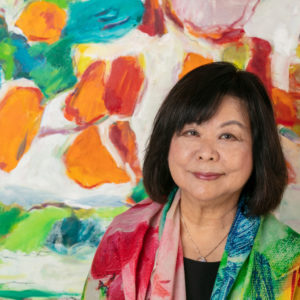Some might say that Dorothy Yung’s (Rong) family quite literally helped build modern-day China. Her family origins did not begin in Fine Art, but rather in the farmland of the Wuxi region, 70 miles north of Shanghai. In the early 1900s the Rong’s established a machine-driven flour mill in Wuxi. Shortages created by the First World War created a high demand for flour. These new mills helped supply the increased demand. Dorothy’s father and uncle grew their milling empire across the country. They introduced textile innovations into their mills, making their company the most successful in the country.
Connecting People through Fine Art
The Yung family wanted to connect their hometown of Wuxi to Shanghai and the rest of China. The next endeavor was to create the infrastructure that would support travel, transportation and development. They built roads and bridges between their small farming town and Shanghai. They literally paved the way for substantial growth in their small town, allowing their family to contribute to China’s infrastructure by connecting China’s roads, bridges and towns.
Today, Dorothy takes inspiration from her late father. She sees her fine art as a bridge that connects us all by using contemporary fine art to connect ancient stories with a modern audience. She unites American and Chinese culture. More importantly, it is a way to connect the spiritual, natural, and physical world. Dorothy’s unique fine art style, she calls “Spiritual Dimensionalism” starts with a story that lives behind Chinese calligraphy. Her themes often personify the power of the female form throughout history, with her ability to use compassion to heal, understanding to unite, and love to connect and heal humanity.
An Ancient Story Made Modern
The calligraphic base of her fine art anchors the viewer in an ancient story. The experience has just begun. By layering in clouds of vibrant color, Dorothy grabs the souls hand and invites it to dance. Inside this experience, Dorothy believes that the voices of her ancestors speak without words and a viewer can visit a place where time and space merge. On her canvas a wall of paint becomes a door; love and compassion lead the way to something bigger, higher, more important than the physical world.
If you ask her, she believes we spend too much time in front of screens that tell us how to think, what to feel, and who to listen to. She feels we need to be spending more time listening to stories that have no words. More importantly, we need to be looking for the supernatural in the natural world. We need to stop and hear the voices that so clearly are there to guide us. It sounds complicated but truly is the simplest thing in the world. As Dorothy likes to say, “Be still, listen, and the bridge will appear.”


